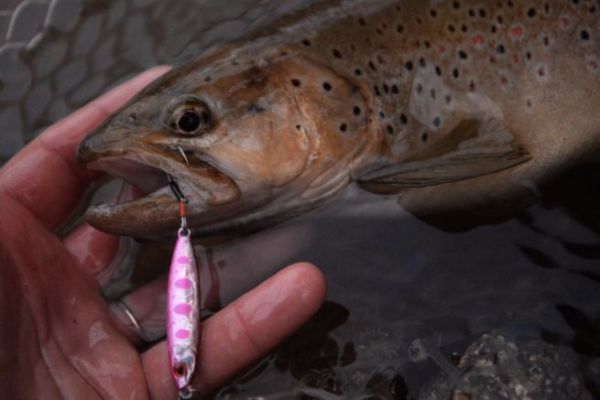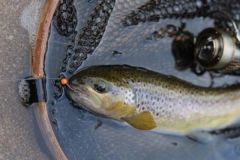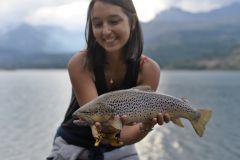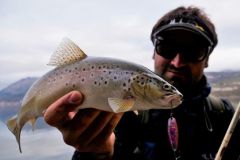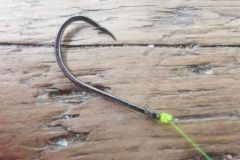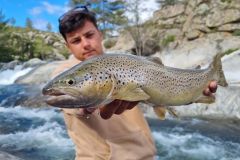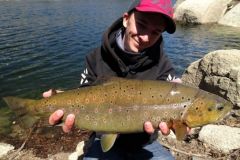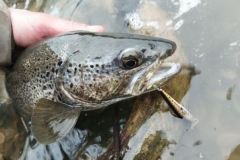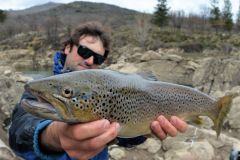What is a metal jig?
Metal jigs are metal lures derived from perch jigs and wobbling spoons. These lures are very popular at sea on all predator species. Unlike wobbling spoons, they do not have a curved silhouette, but are rather straight. They are made of lead, steel, brass or tungsten, making them very heavy and dense.
Their silhouette is pisciform (fish-shaped), straight, with a side that often bulges slightly. This asymmetry stabilizes the lure as it swims downstream. Otherwise, the jig risks spinning on itself, twisting the line. The vast majority of these metal jigs have two attachment points: at the head, for the line, and at the tail, for a possible hook. I say "hook" because, as we'll see below, the hook can also be attached at the head.
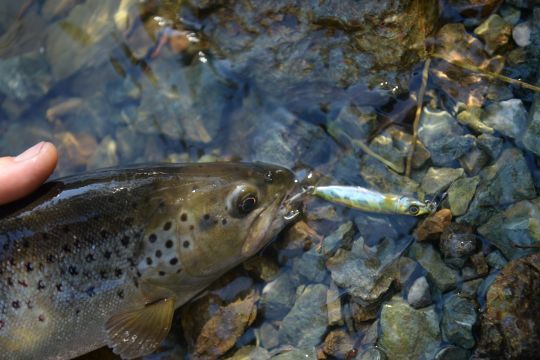
Models suitable for trout measure between 3 and 8 cm and weigh between 2 and 12 grams. Larger models require heavier equipment and specific fishing techniques, which are better suited to very large salmonids, especially migratory ones. Of course, weight and size will have to be adapted to the fish you're after, the configuration of your spots and the size of your prey.
While there are a few models designed for trout, their presence on the market is very anecdotal. The biggest offering of small metal jigs is to be found in the sea-fishing department, particularly for light fishing from the coast. Jigs for stalking horse mackerel in Japan are also very effective on our trout.
The advantages of metal jigs
Metal jigs can be confusing for salmonid anglers who are relatively cautious about using them. Indeed, metals jigs are not very swimmable; at least not as much as most of the lures we use more commonly, and most of the stimuli they emit are visual.
To set them in motion, you need to strike with the tip of the jig, more or less dry depending on the shape of the jig. A tip action facilitates animation. A rod that's too soft, like the ones used for sinking minnows, will absorb too much of the animation and won't be wide and effective. The slimmer the jig, the more nervous and lively its swimming action. The wider it is, the more it will flutter and be attractive on the descent, but it will be less nervous and will "project" less easily.
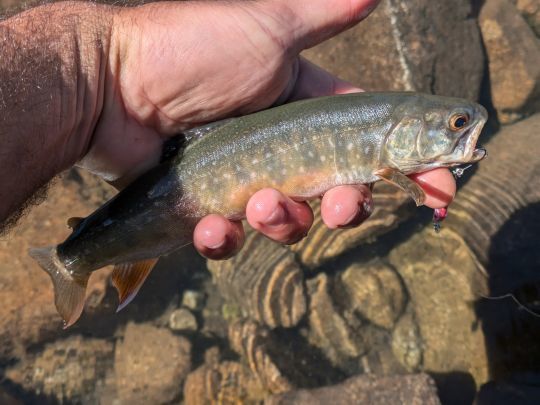
While their use is anecdotal on salmonids, they do allow you to fish in conditions where others are less effective. This is true when you need to cast very far (wide river or lake) or when you need to fish very deep and hollow. For example, in the pools of torrents or in reservoirs.
Armament
An integral part of metal jigging, the use of assist hooks goes hand in hand with the technique. This type of hook is very commonly, if not systematically, used for sea jig fishing. For trout, their use is slowly being democratized for arming swimming fish and wobbling spoons. Some have turned it into a real science, even an art for trout. Such is the case of Olivier Tondeur, who has set up his own brand of accessories and distribution for trout and salmonids. Thanks to his experience and know-how, he now offers a huge and comprehensive range of trout lures. Some models can't be found anywhere else, and with good reason: Olivier developed them himself.
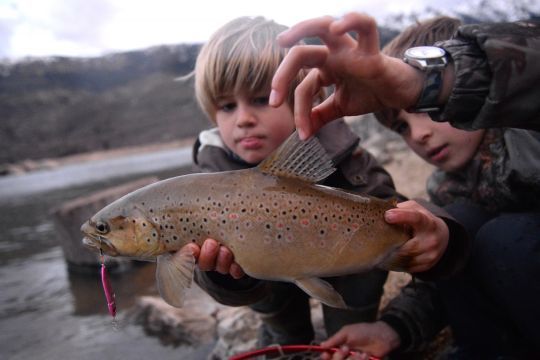
Add to that flawless manufacturing quality, top-quality materials and made in France... Why deprive yourself?
I use these assists for my undulators, spinners, swimmers and especially for my metals jigs. These assists are essential for good jig fishing on several levels. Their suppleness helps the jig to swim, and they catch much less in the line than conventional triples or singles, which make the jig spin, twist the line and force the retrieve. What's more, they render the lure completely inoperative... On bites, the hook will get sucked in when the fish opens its mouth and creates a depression in the water. Finally, the flexibility of the seat prevents the fish from unintentionally unhooking itself from the hook.
